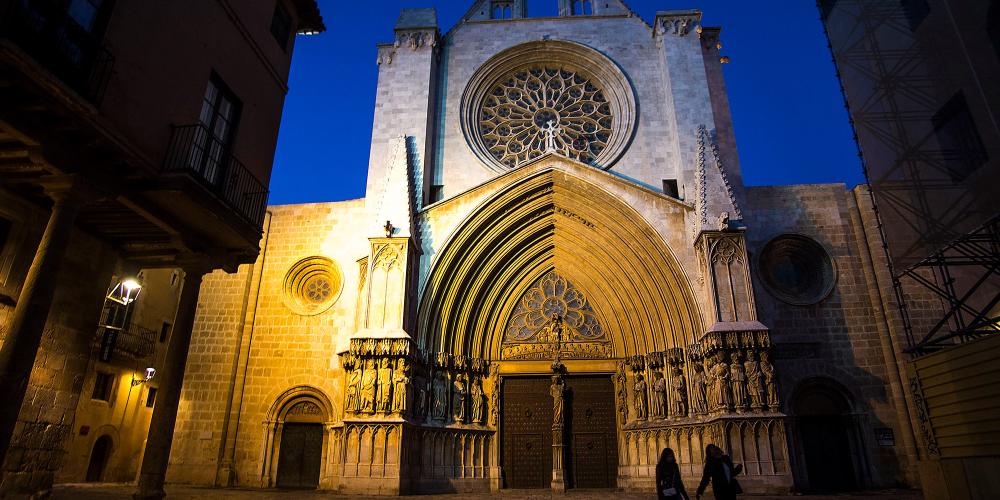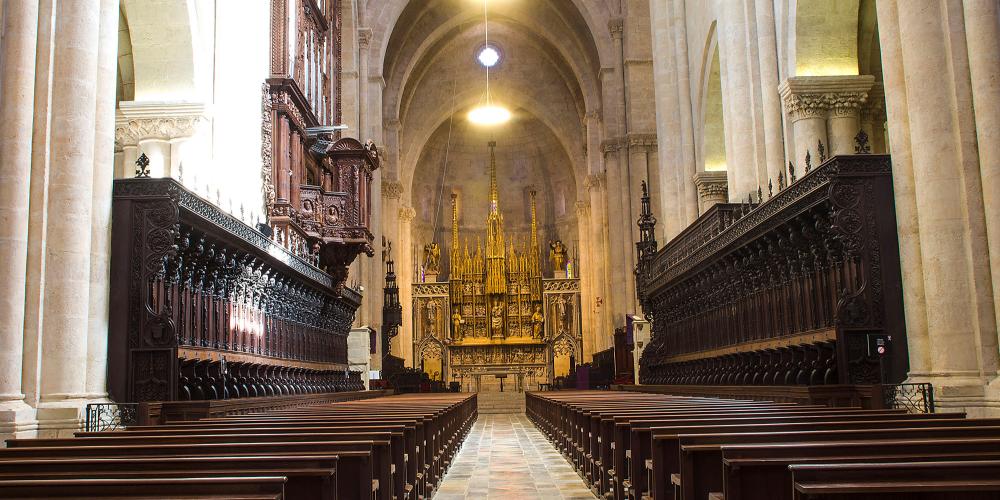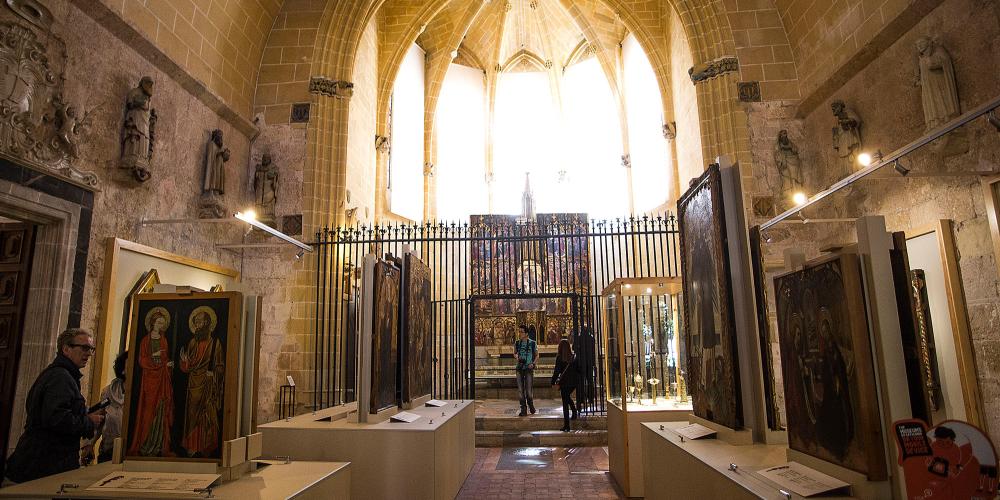Cathedral and Diocesan Museum

Dedicated to Saint Tecla, the city's cathedral was built on approximately the same site of the former Roman temple, which formed a part of the provincial forum. The forum was the seat of the Tarragona provincial government in the 1st century A.D. and was built around two terraced squares. The upper square (the imperial cult complex) was surrounded by a portico, large portions of which can be seen today in the cloister of the city's cathedral. At one end was a large hall, which has been identified as the cella (or inner sanctuary) of the temple.
Construction on the cathedral began in the 12th century, in the Romanesque style and continued throughout the Gothic period. The building was consecrated in 1331; however, it could not be finished due to the Black Death, which took a severe toll on the region. The soaring entrance and rose window of its façade are one of the city’s most emblematic images.
At the cloister entrance, visitors will also find the Diocesan Museum and spectacular Saint Tecla altarpiece. The cloister’s sculpture work is one of the best examples of Romanesque art in Catalonia and dates back to the turn of the 13th century. Special attention should be given to the collections of mediaeval and modern religious art from Tarragona and its diocese. These include altarpieces, stone sculptures and wood carvings, goldwork, wrought-iron work, textiles, and ceramics.





